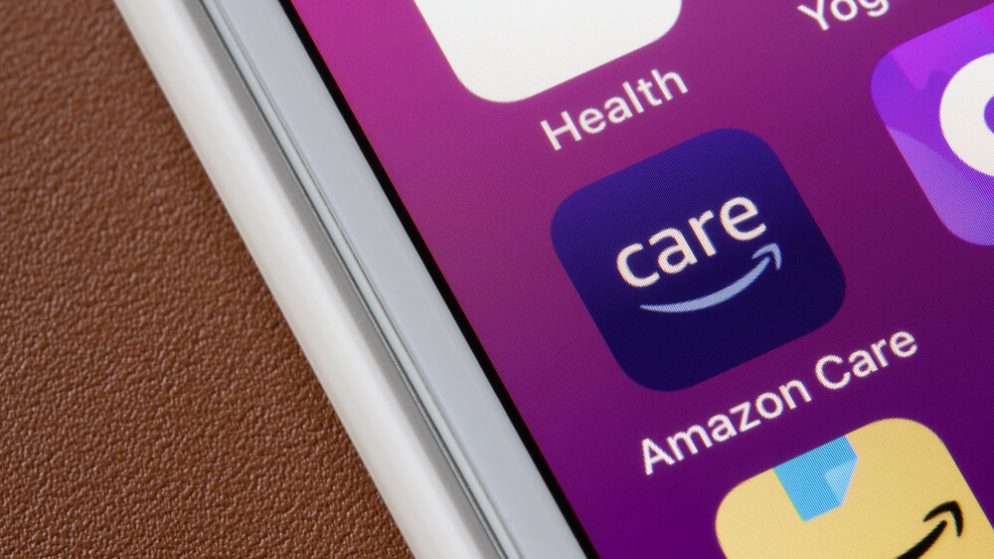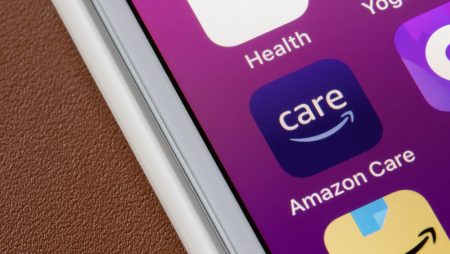



Get new exclusive access to healthcare business reports & breaking news




In 2022, Amazon’s telehealth business division, Amazon Care, is expanding its virtual and in-person care system in 20 new cities, according to Insider, Chicago being one of them, next to Miami, San Francisco and New York.
Although the trend within the industry seems favorable, with about 31% of both small and large employers having expanded their telehealth benefits available for employees last year, according to KFF’s November 2021 annual report, the growth has not been as significant as expected for Amazon Care.
Even if Amazon hasn’t grown as rapidly in the employer space as its competitors, the opportunities to expand are out there and coming to Chicago and the other big cities it intends to expand into this year might prove to be a good move and help the company land clients among US employers of all sizes interested in boosting telehealth access for employees.
Amazon Care landed its first employer client almost a year ago, and, since then, its client base has not widened as much as that of other employer-focused telehealth vendors.
Of course, Amazon Care has employer partners who now include Silicon Labs, TrueBlue, Hilton, and Whole Foods Market (another Amazon-owned company).
But other employer-focused telehealth service providers, such as Included Health (formerly Grand Rounds and Doctor on Demand pre-merger) have an extensive employer client list, and building a similar one would prove difficult. Such an endeavor might take a while, especially since Included Health partners with employers like AmeriGas, Walmart, and Target to either provide their employees with telehealth or healthcare navigation services.
Amazon Care also plans to target insurers, but getting the biggest of them on board is not going to be easy, since most of them already have built-in telehealth solutions.
For instance, legacy insurers like Aetna are trying to push their own virtual care platforms forward and convince employers to use them for their employees.
In August 2021, CVS-Aetna launched Aetna Virtual Primary Care, for self-funded employers—this being the exact same audience Amazon Care is targeting. The services Aetna offers are also similar to those of Amazon, in-person visits to in-network care providers, as well as 7 days a week access to physicians via telehealth.
Aetna is not the only insurer using its own telehealth service to offer to employers. Last year, after Cigna acquired the telehealth platform MDLive, it expanded its virtual-first health plans to Cigna members in employer-sponsored plans. Starting January 2022, with no copay, Cigna’s employer’s clients would get access to MDLive’s virtual primary care, dermatology, behavioral health, and urgent care services.
Amazon’s telehealth services are only a part of its AI-focused efforts. In late 2018, the company launched Comprehend Medical, a machine learning service for health information. According to a CNBC report, Change Healthcare, which processes health claims for pharmacies, was one of the early adopters of the AI system and uses Comprehend Medical to predict whether an insurance claim will be denied or not.
Amazon’s Comprehend Medical is an example of how the company is using AI for healthcare initiatives. Taha Kass-Hout, a senior leader of artificial intelligence at Amazon, explained that Comprehend Medical “came out of a concrete problem that Fred Hutchinson Cancer Institute had inpatient matching to clinical trials. They have been on a mission to do really big things in cancer, and the biggest hurdle there was the matching. And that’s where Comprehend Medical grew out in the first place.”
So, trying to fix existing issues is how Amazon works, its main exploits in the healthcare industry being examples of how the company tries to find appropriate solutions to problems.
Back in 2018, Amazon has patented a new version of its virtual assistant Alexa. The new feature was supposed to use speech analysis to recognize signs of illness or emotion. The app was detecting whether the speaker was ill and offering to sell the medicine. The patent presents the example of a woman coughing and sniffling during her inquiry of the Amazon Echo device. At first, Alexa suggests chicken soup could help with her cold, and then asks whether to order cough drops on Amazon.
Finding solutions to current health problems remained a focus for Amazon. In May 2021, According to an FDA filing, Amazon received authorization from the Food and Drug Administration for a Covid-19 test the company intends to use for its employee screening program.
The FDA letter of authorization is addressed to Cem Sibay, vice president of Amazon Labs, who was previously a top executive of Amazon’s Prime unit.
The test, developed by Amazon subsidiary STS Lab Holdco, is done via a nasal swab that individuals administer themselves, either under the supervision of a healthcare professional or at home.
In order to widen its client base, all Amazon Care needs to do is continue to find solutions to widespread issues related to health care. The company could develop partnerships not only with employers willing to provide telehealth services to their staff, but also with smaller insurers, the ones who do not yet have a telehealth business built in-house. Gathering all the smaller players under one big Amazon umbrella might boost revenues and improve Amazon Care’s growth rate.